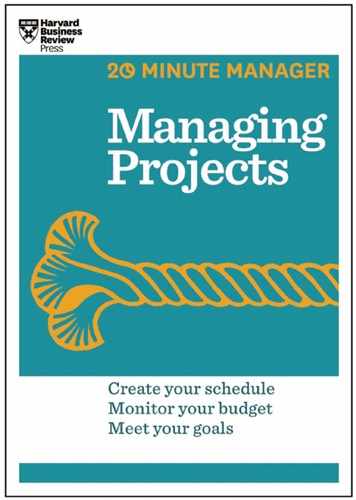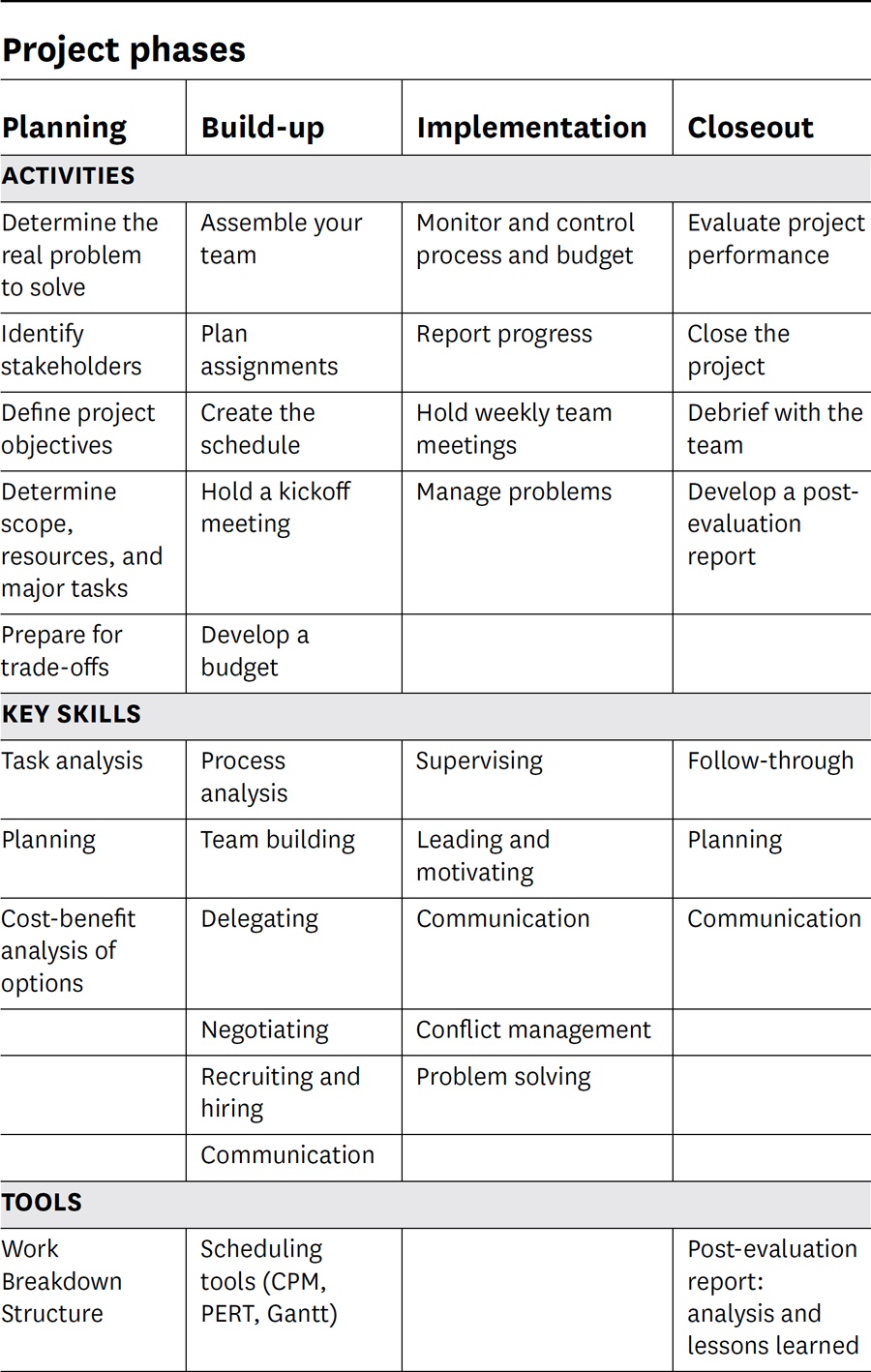To begin, let’s talk about what a project is and what project management is all about. As you’ll see, every project can be broken down into four phases—planning, build-up, implementation, and closeout—which makes the whole enterprise a lot easier to get your mind around. You’re likely to encounter bumps along the way, so we’ll also touch on how to handle the most common problems.
What constitutes a project
A project is a good-sized task that someone wants done. Unlike a process, it has a beginning, middle, and end. Building a house is a project. So is launching a new product or developing a new marketing campaign.
Some companies are project-based—that’s all they do. Think of construction and engineering firms, custom manufacturers, advertising agencies, and so on. Other businesses rely on processes for their everyday operations, launching a project only when they want to make a change or undertake something new. For example, a health-care center might sponsor a project to redesign its patient-intake procedures.
Whatever the context, the word project usually refers to a well-defined task involving a group of people working together. Projects can last any amount of time, but most take somewhere between a month and a year to complete.
What project management involves
Every project needs someone in charge. Big projects, such as constructing a power plant, are led by professional project managers. Smaller ones, such as creating a marketing brochure for a new pharmaceutical, tend to be run by people who must add the project to their regular work.
Regardless of job size, the buck stops with these project managers. They must see the project through from start to finish. They draw up the plan, assemble the team, decide how to allocate resources, schedule the work, watch the budget, solve problems, and do a lot of other things as well. It can be a big responsibility, even when the project is modest in scope.
What’s more, project managers often find themselves working with a team of volunteers—colleagues who have regular assignments and supervisors but who have agreed to contribute time to the project. When that’s the case, the project managers rarely have direct authority over their team members, so they must get people working together effectively without giving orders.
In short, project management requires organizational skills, financial skills, and people skills. Fortunately, you can learn all these skills through study and experience. This book will help you get started.
The four phases of every project
What do designing a car, developing a website, moving a company, cleaning up a disaster site, and updating an information system have in common? They’re all projects, and they all go through the same four phases:
• Planning. In this initial phase, you define the problem and identify the stakeholders—that is, everybody who has a vested interest in the project. You also map out your goals and determine what you’ll need to accomplish them.
• Build-up. This is when you assemble your team, plan the individual tasks, develop a schedule and a budget, and hold your kickoff meeting.
• Implementation. Now the project is underway. People are busy working on their assigned tasks. You’re holding regular meetings, monitoring the schedule and the budget, and preparing regular reports. Oh, yes—you’re also resolving the many unexpected issues that inevitably pop up.
• Closeout. The project is complete. Your job is to hand it off to whoever will be responsible for the final product or the new process. You review the team’s accomplishments and “lessons learned,” and you prepare a final report.
Each phase has its own set of goals, activities, tools, and skills. As a project manager, you’ll articulate the goals, prepare your team to carry out the activities, and use each set of tools and skills as needed (see table 1).
Even though each phase is different, you’ll find yourself returning to tasks from earlier phases. For example, you typically begin the planning phase with a ballpark figure for your budget and an estimated completion date for the project. Once you’re in the build-up phase, you begin to define the details of the project plan. These details give you new information, so you revise the budget and schedule accordingly. This doesn’t mean you’re moving backward. You’re just incorporating what you’ve learned into the overall plan. You’re seeing more of the big picture with each step you take.

